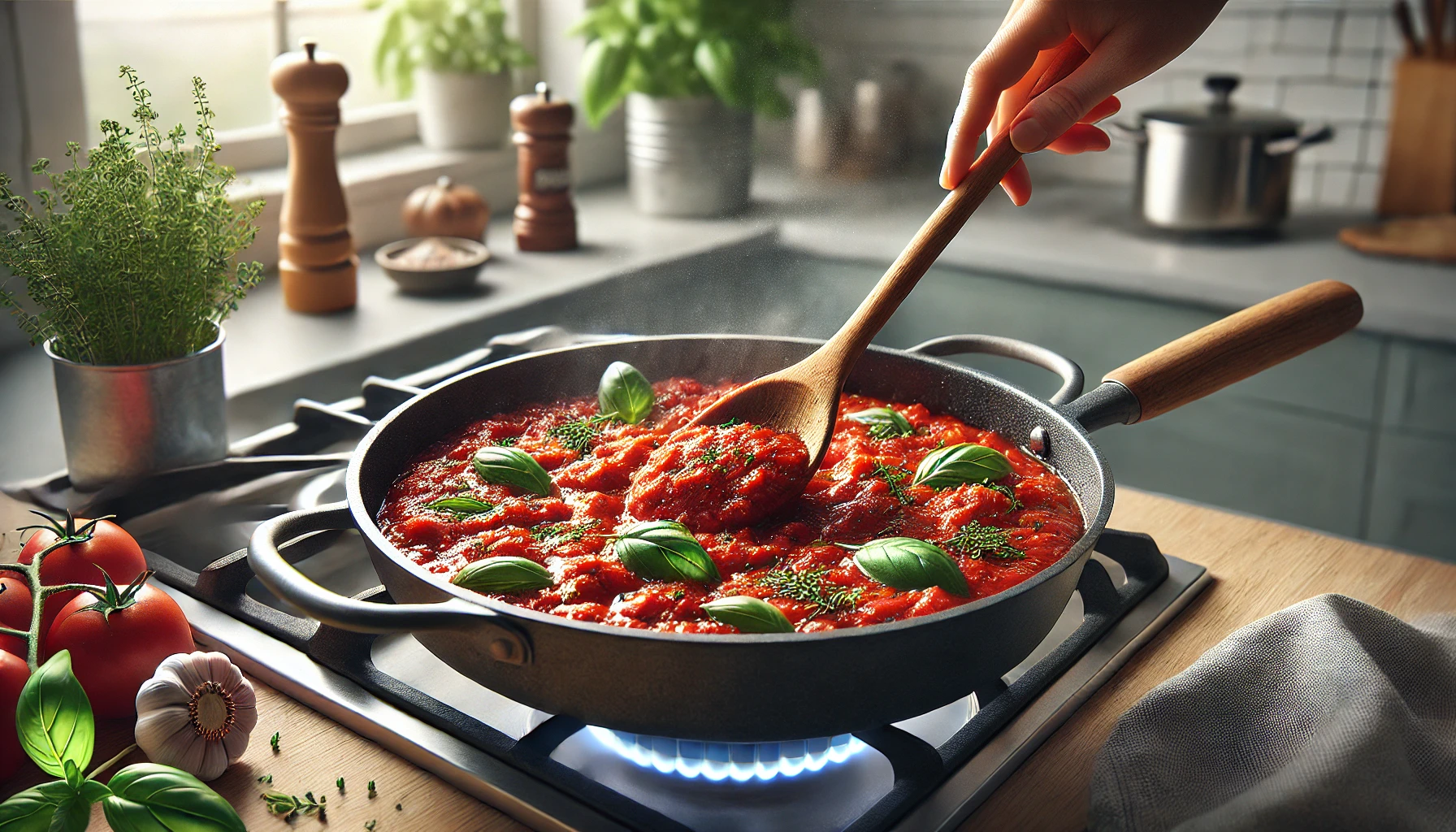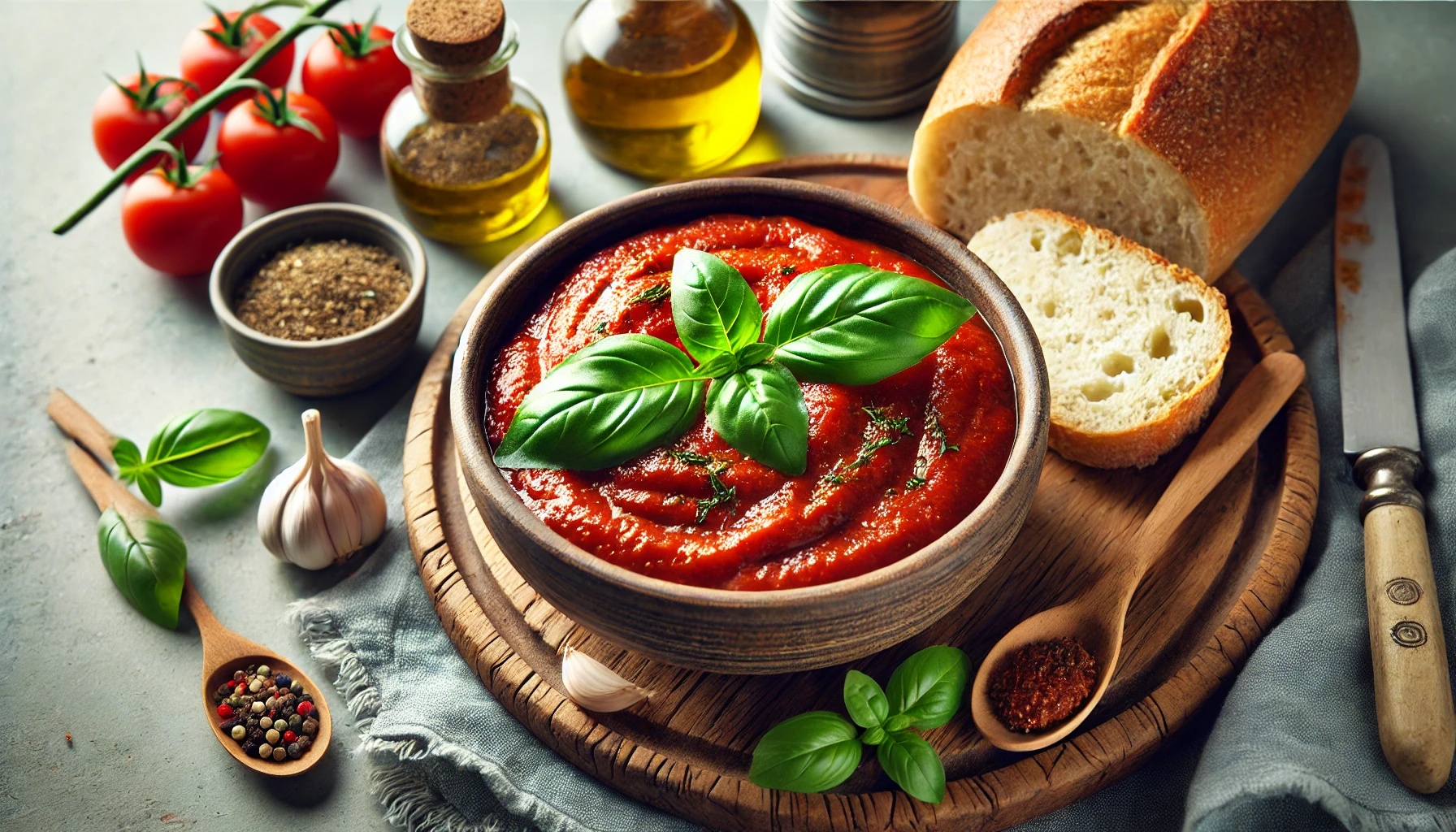The Ultimate Guide to Homemade Marinara Sauce: Simple, Delicious, and Versatile
Marinara sauce is a staple in Italian cuisine, beloved for its simplicity, rich flavor, and versatility. Whether you’re topping your favorite pasta, using it as a base for pizza, or incorporating it into other dishes, a good marinara sauce can elevate any meal. While store-bought marinara can be convenient, nothing compares to the taste and satisfaction of making your own from scratch. In this blog post, we’ll take you through the process of creating a homemade marinara sauce that’s both easy and delicious. With a few basic ingredients and some time, you’ll have a sauce that’s bursting with fresh flavors and ready to become a new favorite in your kitchen.
Why Make Marinara Sauce at Home?
Homemade marinara sauce offers several advantages over its store-bought counterparts:
- Freshness: When you make marinara sauce at home, you control the quality and freshness of the ingredients. Fresh tomatoes, garlic, and herbs create a vibrant, flavorful sauce that’s hard to match with anything from a jar.
- Customization: Making your own marinara allows you to adjust the seasoning, consistency, and even the acidity to suit your taste preferences. Want a bit more garlic? Add it. Prefer a smoother sauce? Blend it. The possibilities are endless.
- No Preservatives: Store-bought sauces often contain preservatives, added sugars, and other unnecessary ingredients. Homemade marinara is pure and free from any artificial additives, making it a healthier option.

- Cost-Effective: Making marinara sauce at home can be more cost-effective than buying high-quality store-bought sauces, especially if you use ingredients that are in season or on sale.
The Essential Ingredients for Marinara Sauce

One of the beauties of marinara sauce is its simplicity. You only need a handful of ingredients, many of which you probably already have in your pantry. Here’s what you’ll need:
1. Tomatoes
The star of the show is, of course, the tomatoes. For the best flavor, use ripe, fresh tomatoes when they’re in season. Roma or San Marzano tomatoes are ideal because of their low water content and rich flavor. However, high-quality canned tomatoes, such as San Marzano D.O.P. certified tomatoes, are a great alternative, especially when fresh tomatoes are out of season.
2. Olive Oil
A good extra virgin olive oil is essential for sautéing the garlic and onions and for adding richness to the sauce. The olive oil also helps to infuse the sauce with flavor, making it silky and smooth.
3. Garlic
Garlic is a must in marinara sauce, providing depth and a hint of pungency that complements the sweetness of the tomatoes. Depending on your taste, you can adjust the amount of garlic to be more subtle or more pronounced.
4. Onions
While not always included in every marinara recipe, onions add a natural sweetness and additional depth of flavor. Finely chopped yellow or white onions are typically used.
5. Herbs
Fresh herbs are the key to a flavorful marinara sauce. Basil and oregano are the most common, with basil adding a sweet, aromatic quality and oregano contributing a more earthy flavor. Fresh parsley can also be added for a bit of brightness.
6. Salt and Pepper
Seasoning is crucial to bring out the best in your sauce. Salt enhances the natural flavors of the tomatoes, while freshly ground black pepper adds a subtle kick.
7. Optional Ingredients
- Red pepper flakes: For a touch of heat, add a pinch of red pepper flakes.
- Sugar: If your tomatoes are too acidic, a small amount of sugar can help balance the flavors.
- Red wine or balsamic vinegar: A splash of red wine or vinegar can add complexity and a slight tang to the sauce.
- Bay leaf: Adding a bay leaf while the sauce simmers can impart a subtle, herbal note.
Step-by-Step Guide to Making Homemade Marinara Sauce
Making marinara sauce is a straightforward process, but it requires some patience to allow the flavors to meld together. Here’s a step-by-step guide:
1. Prepare the Ingredients
Start by preparing all your ingredients. If you’re using fresh tomatoes, you’ll need to peel and seed them. To peel, score a small “X” on the bottom of each tomato and blanch them in boiling water for about 30 seconds. Transfer them to an ice bath, and the skins should peel off easily. Once peeled, cut the tomatoes in half, remove the seeds, and roughly chop them.
If you’re using canned tomatoes, simply crush them by hand or with a fork in a large bowl.
Finely chop the onions and garlic, and have your herbs ready to go.
2. Sauté the Onions and Garlic
In a large saucepan or skillet, heat the olive oil over medium heat. Add the chopped onions and sauté until they’re soft and translucent, about 5 minutes. Be careful not to let them brown too much, as you want a sweet, mellow flavor.
Next, add the garlic and sauté for another minute or two until fragrant. If you’re adding red pepper flakes, this is the time to do it.
3. Add the Tomatoes
Once the onions and garlic are ready, add the tomatoes to the pan. Stir to combine, making sure the tomatoes are evenly mixed with the onions and garlic. If you’re using canned tomatoes, include the juice from the can for extra flavor.
4. Simmer the Sauce
Bring the mixture to a gentle simmer. Add your herbs—either finely chopped or whole sprigs—and season with salt and pepper. If you’re using a bay leaf or a splash of red wine, add it now.
Reduce the heat to low and let the sauce simmer uncovered for at least 30 minutes, but ideally up to 1 hour. The longer it simmers, the more the flavors will develop. Stir occasionally to prevent sticking, and if the sauce becomes too thick, you can add a bit of water or broth to reach your desired consistency.
5. Adjust Seasoning and Blend (Optional)
After simmering, taste the sauce and adjust the seasoning if necessary. If the sauce is too acidic, add a pinch of sugar to balance it out.
For a smoother sauce, you can use an immersion blender to puree the sauce directly in the pot, or transfer it to a blender in batches. If you prefer a chunkier texture, leave it as is.
6. Serve or Store
Once the sauce is ready, remove it from the heat and discard any whole herb sprigs or bay leaves. Your homemade marinara sauce is now ready to use!
This sauce can be used immediately or stored in an airtight container in the refrigerator for up to a week. It also freezes well for up to three months, making it a great option for meal prep.
Ways to Use Homemade Marinara Sauce
Homemade marinara sauce is incredibly versatile and can be used in a variety of dishes. Here are a few ideas:
- Classic Spaghetti Marinara: Toss your marinara sauce with al dente spaghetti and top with freshly grated Parmesan cheese and basil for a simple, satisfying meal.
- Pizza Sauce: Spread your marinara sauce on pizza dough, add your favorite toppings, and bake for a homemade pizza night.
- Meatball Subs: Use marinara sauce as a base for hearty meatball subs. Layer meatballs in a toasted sub roll, cover with sauce, and top with melted mozzarella cheese.
- Eggplant Parmesan: Layer marinara sauce with breaded and fried eggplant slices, mozzarella, and Parmesan cheese, then bake until bubbly and golden.
- Chicken or Veal Parmesan: Coat chicken or veal cutlets in breadcrumbs, fry until golden, then bake with marinara sauce and mozzarella cheese.
- Stuffed Peppers: Mix marinara sauce with cooked rice and ground meat or vegetables, stuff into bell peppers, and bake until tender.
- Shakshuka: Use marinara sauce as a base for shakshuka by simmering it with spices and poaching eggs directly in the sauce.
Conclusion

Homemade marinara sauce is a simple yet flavorful staple that deserves a spot in every kitchen. With just a few quality ingredients and a little time, you can create a sauce that’s far superior to anything you can buy at the store. Whether you’re using it for pasta, pizza, or any other dish, this versatile sauce will quickly become a favorite go-to in your culinary repertoire. So next time you’re in the mood for something comforting and delicious, skip the jar and make your own marinara sauce from scratch—you won’t be disappointed!







